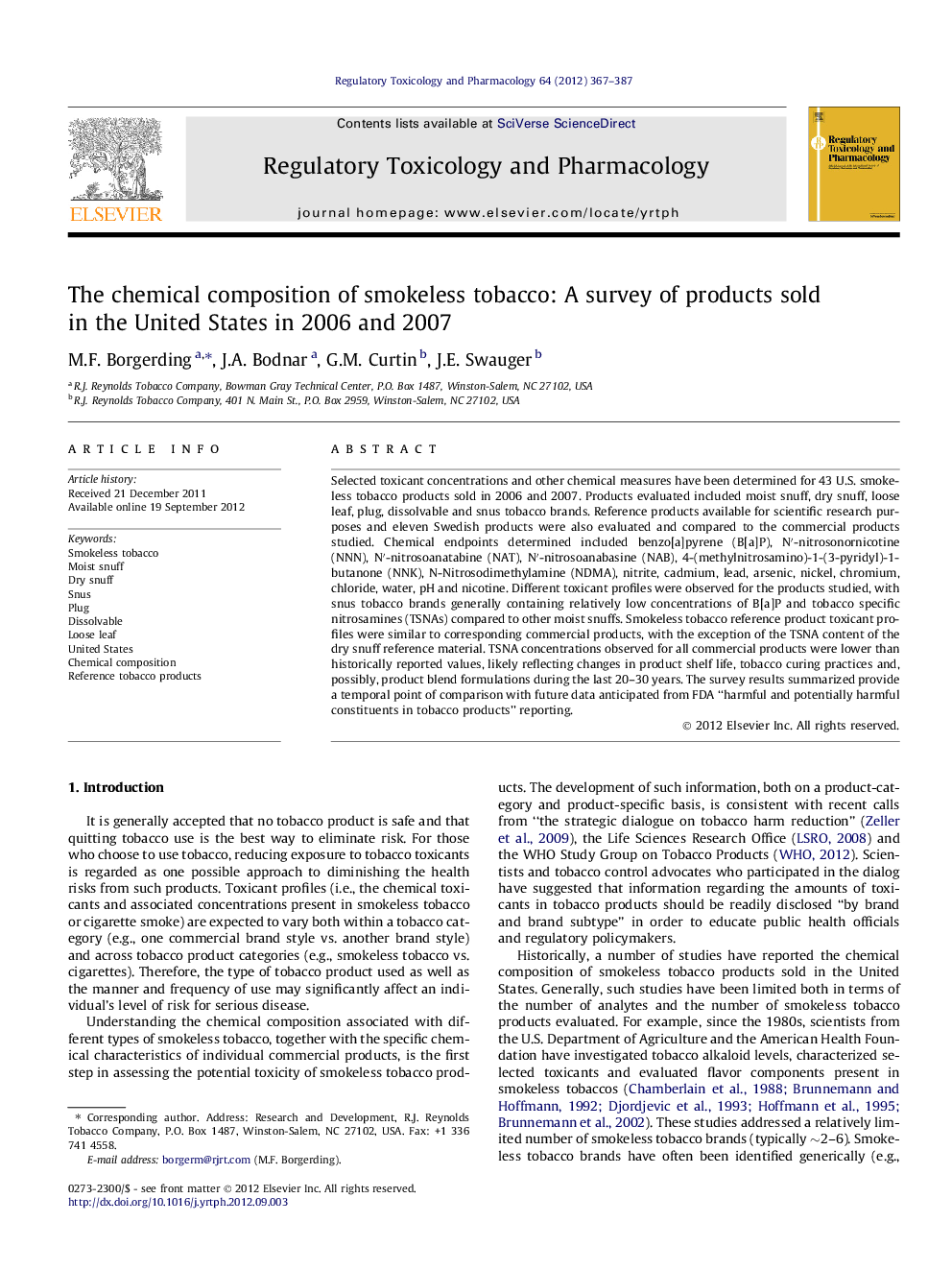| Article ID | Journal | Published Year | Pages | File Type |
|---|---|---|---|---|
| 5857746 | Regulatory Toxicology and Pharmacology | 2012 | 21 Pages |
Selected toxicant concentrations and other chemical measures have been determined for 43 U.S. smokeless tobacco products sold in 2006 and 2007. Products evaluated included moist snuff, dry snuff, loose leaf, plug, dissolvable and snus tobacco brands. Reference products available for scientific research purposes and eleven Swedish products were also evaluated and compared to the commercial products studied. Chemical endpoints determined included benzo[a]pyrene (B[a]P), Nâ²-nitrosonornicotine (NNN), Nâ²-nitrosoanatabine (NAT), Nâ²-nitrosoanabasine (NAB), 4-(methylnitrosamino)-1-(3-pyridyl)-1-butanone (NNK), N-Nitrosodimethylamine (NDMA), nitrite, cadmium, lead, arsenic, nickel, chromium, chloride, water, pH and nicotine. Different toxicant profiles were observed for the products studied, with snus tobacco brands generally containing relatively low concentrations of B[a]P and tobacco specific nitrosamines (TSNAs) compared to other moist snuffs. Smokeless tobacco reference product toxicant profiles were similar to corresponding commercial products, with the exception of the TSNA content of the dry snuff reference material. TSNA concentrations observed for all commercial products were lower than historically reported values, likely reflecting changes in product shelf life, tobacco curing practices and, possibly, product blend formulations during the last 20-30Â years. The survey results summarized provide a temporal point of comparison with future data anticipated from FDA “harmful and potentially harmful constituents in tobacco products” reporting.
⺠U.S. smokeless tobacco products sold in 2006/7 have been surveyed. ⺠Toxicant profiles are determined by brand for a wide range of smokeless tobacco products. ⺠Toxicant levels vary substantially for different categories of smokeless tobacco. ⺠Recently introduced smokeless tobacco products contain low toxicant levels. ⺠The extensive data set developed will inform both scientists and regulators.
